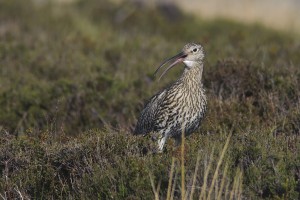
BASC has highlighted how grouse moors are providing the last refuge for one of Britain’s most threatened birds.
Curlew numbers in Scotland have halved in the past 20 years, according to a new report by Scottish Natural Heritage. The British Trust for Ornithology (BTO) says this wader is now considered the UK’s highest conservation priority.
But BASC and other leading shooting organisations have emphasised research which shows that up to five times more wading birds are supported on managed moorland than on unmanaged ground.
And research by the Game and Wildlife Conservation Trust (GWCT) has shown there are four times as many successful breeding pairs of curlews on land controlled for grouse shooting.
BASC’s head of bio-diversity, Ian Danby, said: “This really gives the lie to those who try to present grouse moors as some sort of game-bird monoculture. There is a consistent body of evidence that show that land managed for grouse benefits a wide range of species, including upland waders.
“Gamekeepers help to maintain the vital balance between predator and prey in addition to maintain habitat for wildlife, and grouse moors are a fine example of this.”
Factors driving the decline in bird populations are thought to include land-use change, forestry and the impact of predators. Terrestrial birds are at a higher risk due to their preference for foraging and nesting on the ground and for choosing to walk or run when threatened rather than taking flight.
However, after a nine-year project on four moorland sites, the GWCT concluded that the concentration of breeding waders seemed to be a direct result of predator control and rotational burning.
BASC vice-chairman Mike Sherman said: “Birds such as curlews flourish on land managed correctly by gamekeepers. Gamekeepers are keenly atuned to the inter-relation between the factors which encourage a diverse variety of bird species to make our moorlands their permanent home.”
For further details of the benefits of moorland management, please see here.
